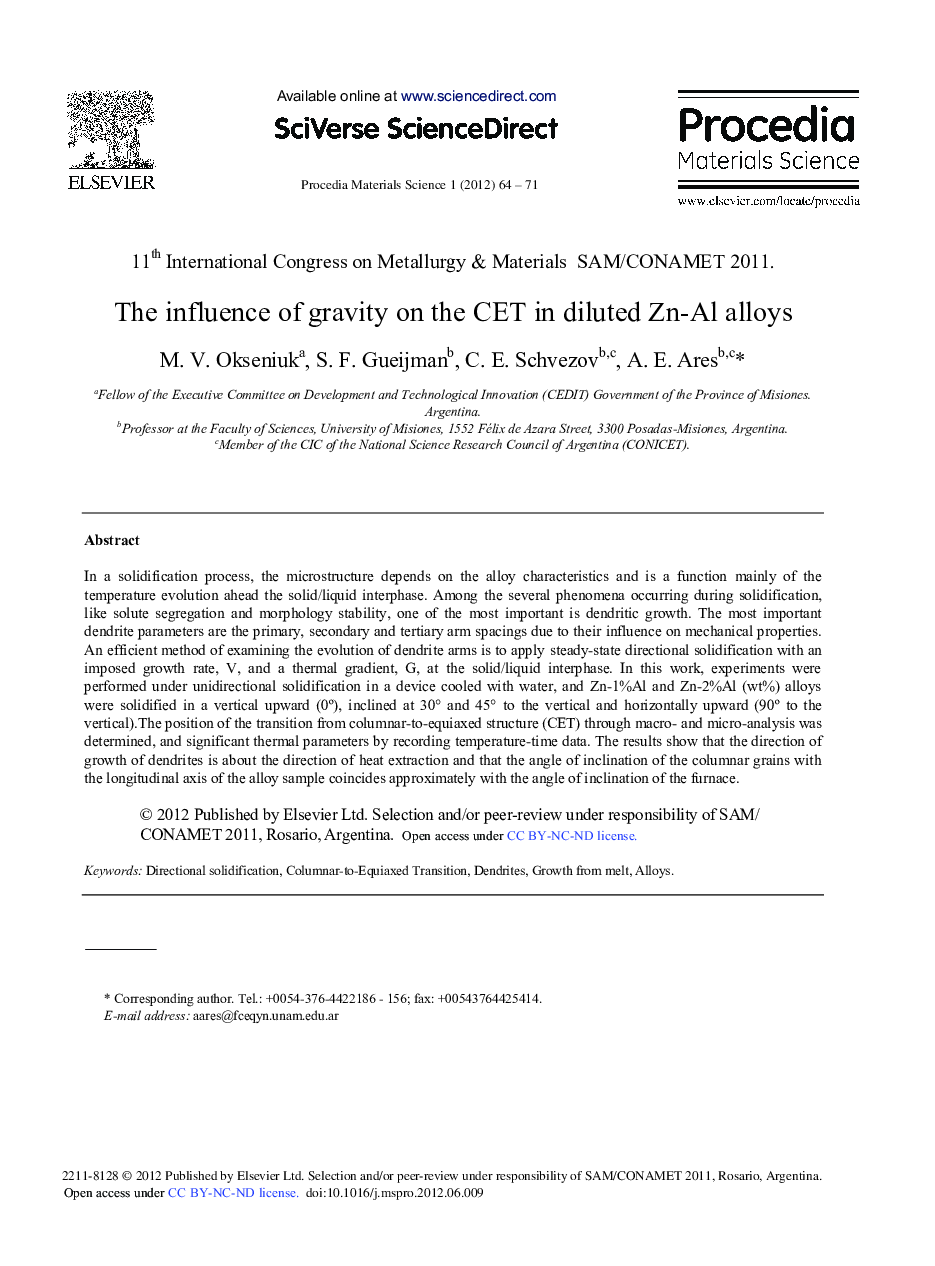| Article ID | Journal | Published Year | Pages | File Type |
|---|---|---|---|---|
| 1634856 | Procedia Materials Science | 2012 | 8 Pages |
In a solidification process, the microstructure depends on the alloy characteristics and is a function mainly of the temperature evolution ahead the solid/liquid interphase. Among the several phenomena occurring during solidification, like solute segregation and morphology stability, one of the most important is dendritic growth. The most important dendrite parameters are the primary, secondary and tertiary arm spacings due to their influence on mechanical properties. An efficient method of examining the evolution of dendrite arms is to apply steady-state directional solidification with an imposed growth rate, V, and a thermal gradient, G, at the solid/liquid interphase. In this work, experiments were performed under unidirectional solidification in a device cooled with water, and Zn-1%Al and Zn-2%Al (wt%) alloys were solidified in a vertical upward (0¼), inclined at 30¡ and 45¡ to the vertical and horizontally upward (90¼ to the vertical).The position of the transition from columnar-to-equiaxed structure (CET) through macro- and micro-analysis was determined, and significant thermal parameters by recording temperature-time data. The results show that the direction of growth of dendrites is about the direction of heat extraction and that the angle of inclination of the columnar grains with the longitudinal axis of the alloy sample coincides fapproximately with the angle of inclination of the furnace.
